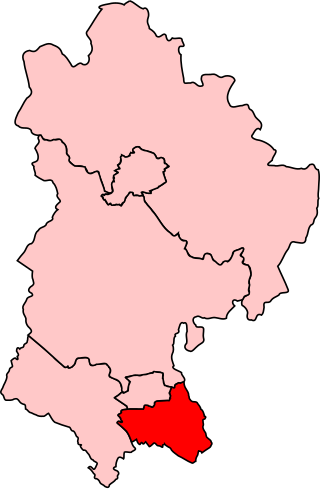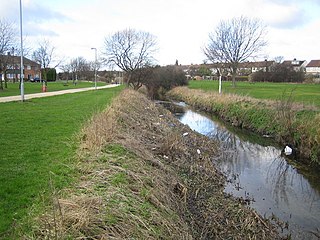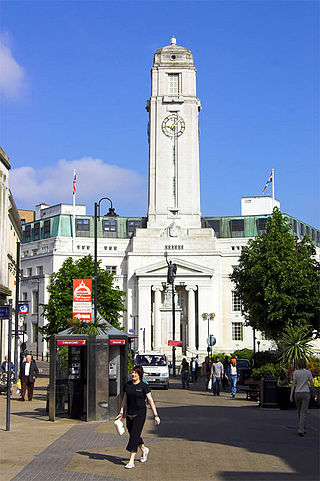
Mid Bedfordshire is a constituency represented in the House of Commons of the UK Parliament since 2005 by Nadine Dorries, of the Conservative Party. Apart from four early years, the constituency has returned a Conservative since its creation in 1918.

Luton North is a constituency represented in the House of Commons of the UK Parliament since 2019 by Sarah Owen, of the Labour Party.

Luton South is a constituency in Bedfordshire represented in the House of Commons of the UK Parliament since 2019 by Rachel Hopkins, a member of the Labour Party.

Reading South was a borough constituency represented in the House of Commons of the Parliament of the United Kingdom. It elected one Member of Parliament (MP) by the first past the post system of election. The constituency covered an area in and around the town of Reading in the county of Berkshire.

Reading North was a borough constituency represented in the House of Commons of the Parliament of the United Kingdom. It elected one Member of Parliament (MP) by the first past the post system of election. The constituency covered an area in and around the town of Reading in the county of Berkshire.

Luton Rural District was a local authority in Bedfordshire, England from 1894 to 1974. It covered an area which almost surrounded but did not include the towns of Luton and Dunstable.
Croydon North West was a borough constituency represented in the House of Commons of the Parliament of the United Kingdom. It elected one Member of Parliament (MP) by the first past the post system of election.

Limbury is a suburb of Luton, in the Luton district, in the ceremonial county of Bedfordshire, England, and was formerly a village before Luton expanded around it. The area is roughly bounded by Bramingham Road to the north, Marsh Road to the south, Bramingham Road to the west, and Catsbrook Road, Runfold Avenue, Grosvenor Road, Bancroft Road and Blundell Road to the east.
Luton was a constituency including the town of Luton in Bedfordshire. It returned one Member of Parliament (MP) to the House of Commons of the UK Parliament from 1885 to 1974, elected by the first past the post system.

Leagrave is a former village and now a suburb of Luton, in the Luton district, in the ceremonial county of Bedfordshire, England, in the northwest of the town. The area is roughly bounded by Vincent Road, Torquay Drive and High Street to the north, Roman Road and Stoneygate Road to the south, the M1 to the west, and Marsh Road and Leagrave Park to the east.

South Bedfordshire was a county constituency in Bedfordshire. It returned one Member of Parliament (MP) to the House of Commons of the Parliament of the United Kingdom, elected by the first past the post system.

Southend East was a parliamentary constituency in Essex. It returned one Member of Parliament (MP) to the House of Commons of the Parliament of the United Kingdom.

Bury Park is an area of Luton, in the Luton district, in the ceremonial county of Bedfordshire, England. It is located 1 mile north west of the town centre on the road to Dunstable. The area is roughly bounded by Claremont Road and Highfield Road to the north, Telford Way to the south, Hatters Way to the west, and the Midland Main Line to the east.

Luton Borough Council is the local authority of Luton, in the ceremonial county of Bedfordshire, England. Luton is a unitary authority, having the powers of a county and district council combined. It is a member of the East of England Local Government Association.

Luton, England, is a unitary authority, and remains part of the ceremonial county of Bedfordshire. Luton is currently represented on three different tiers of Government.
This article is about the history of Luton, a large town located in the south of Bedfordshire, England.
The ceremonial county of Cheshire, which comprises the unitary authorities of Cheshire East, Cheshire West and Chester, Halton and Warrington, has returned 11 MPs to the UK Parliament since 1997.
The ceremonial county of Tyne and Wear has returned 12 MPs to the UK Parliament since 2010. It was created under the Local Government Act 1972, which came into effect on 1 April 1974, comprising the urban areas around the mouths of the Rivers Tyne and Wear, previously parts of the historic counties of Northumberland and Durham.













